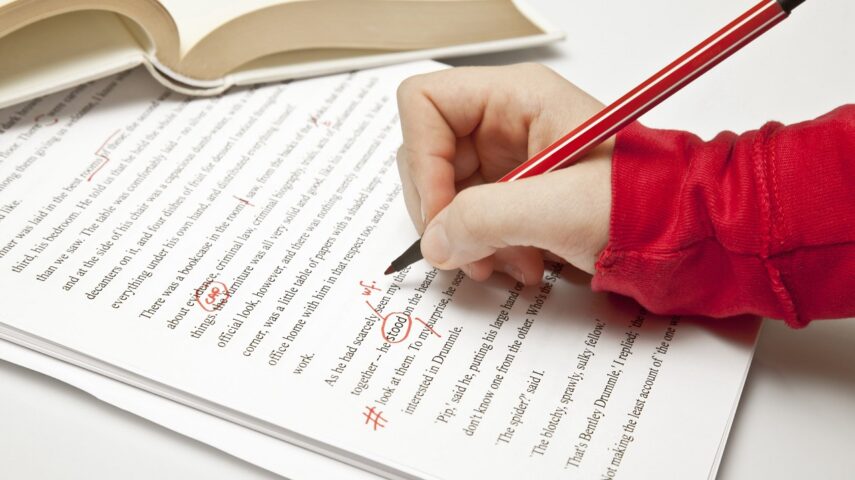Having good writing techniques at hand will prevent you from stagnating.
If you are researching how to write more and better, you have found the page you were looking for.
Writing techniques
You may find hundreds of pages on the web that give you the same old advice. “Read a lot,” “Try to be careful not to make mistakes,” “Be as clear as possible, “… “Yeah, sure, I already do that,” we, the lovers of literature and writing, tend to think.
That’s why we’ve put together the best writing tips and techniques by professional writers from https://www.paperhelp.org/, so say goodbye to the usual useless advice! Hello, new and brilliant writer: here are the ones that will be your master guides from now on.
1. Get organized

One of the most difficult points when it comes to writing is to organize your ideas in a clear way. Although everything sounds good in your head, remember that it must be your readers who understand what you want to convey. So, before you start writing like crazy, pay attention to one of the most useful writing techniques.
Can you imagine the shape of a pyramid? Draw it and divide it into several parts. In the top triangle, write your basic idea and the most basic plot at the top point. That is, no dresses, ornaments, or accompaniments. Little by little, as you go down the divisions, write the details that will accompany the main triangle.
It is essential to be clear about the structure and writing order you will use in your text. Only in this way will you get your readers to read exactly what you want to say. Your writing must also deliver what you promise. Otherwise, if the reader does not find the promise after selling a couple of ideas in the title and the first paragraph, he will not come back. Being clear and direct and at the same time enigmatic and addictive are basic characteristics of a good writer.
2. Practice, practice, and practice again
It sounds like a myth, and it is not. Like a pastry chef who begins to bake his desserts, you must learn from your mistakes. Of course, you must have a foundation, but everyone can become a successful writer with a few writing techniques. And this one translates, if you will, into a piece of advice that I’m sure you’ve heard many times. “Be persistent with your dreams.”
With time and practice, you’ll discover your own tricks. For example, you will gradually stop using your so (formerly) beloved adjectives. There are many issues that describe themselves. You will surely also leave behind other habits that, in reality, make no sense.
3. Filter

Once you think you have the complete text, it’s time to review it. But, in this case, it will not only be a spelling or proofreading check. Dedicate yourself to removing everything that seems to you to be trash in the second reading (or even third). Spending extra words on one thing that can be said in two are unnecessary.
You should also pay attention to the narrative thread. Make sure that everything has been written with the same verb tenses. Also, pay special attention to unintentional changes in gender and number. They may go unnoticed at first reading, but they are annoying and irritating when they occur.
10-20-30 technique
If you are looking for specific writing techniques, today, we present one of the most fashionable ones. But it’s not just that it’s fashionable; it’s that many best-selling works are based on it. Now you will see.
The 10-20-30 technique or method, designed explicitly for novel writing, is based on scenes. After analyzing several best-selling novels, C. S. Lakin proposes this formula for guaranteed success.
Many people think that writing a novel will be easy and a matter of imagination. Yes, there may be authors who have a knack for avoiding all the pitfalls and creating their novels on the fly. But, generally, most authors need to move forward under a road map to avoid collapse. And with this technique, finding one is much easier.
Here’s how to use it:
As we already mentioned, the first step is to define in detail the novel’s main plot. This is the first step, in which you must create the 10 main scenes of the story. These are the ones that will make up the main plot, and the main characters should appear in them.
Once you have the plot well defined with its ten planned scenes, you enter the phase of 20. At this stage, you must plan another 10 scenes that will make up the layer of subplots. These are the plots that, starring secondary characters, directly influence the main plot.
Now that you have the first 20 scenes well interconnected, it’s time for the third layer. This is made up of another 10 bridge scenes. They serve mainly to give continuity to the story you are telling. It is not about creating scenes that contain nothing special. On many occasions, they usually contain processes of important characters.
Interconnection, essential

No matter what kind of novel you create, you must remember that the interconnection between the scenes is essential. Everything that happens must be either expository in itself or have an explanation behind it. And this explanation is always based on an action or a reaction.
Keeping these writing tricks and techniques in mind, you will be able to create interesting content in a much more agile way and, if it is the case, a successful novel. What are you waiting for to open a new text document? Go for your dreams!
Related Posts:
- 7 Tips To Avoid Plagiarism In Your Writing - Easily…
- Ombre Powder Brows: Why This Brow Trend is Getting…
- Mastering Sheet Metal Cutting: Tips and Techniques…
- How to Write Effective and Compelling Academic Essays?
- 5 Working Tips To Write An Effective Resume And…
- How to Write a Great Admission Essay: 7 Tips and…







